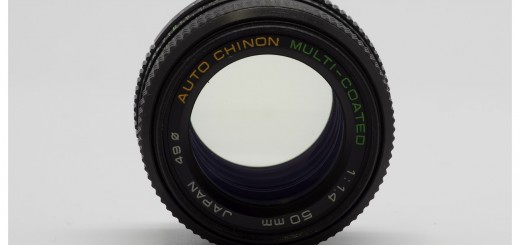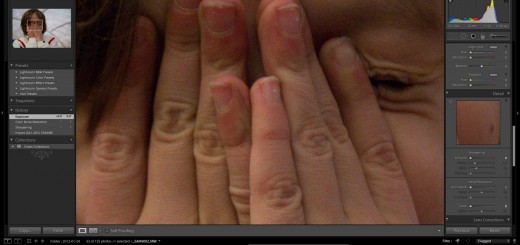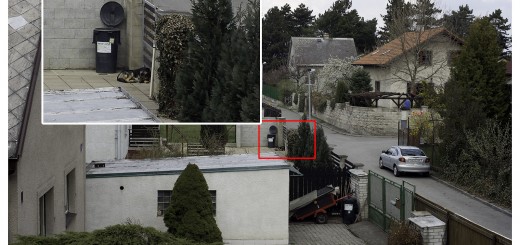Sony SEL 16mm f2.8 vs Samsung NX 16mm f2.4
Nevertheless, none of those lenses is a superb performer in terms of border clarity. I bought Sony SEL 16mm f2.8 on eBay from Asia, new without box. (Probably taken from the kit) Paid 130 USD shipping included. For the Samsung I paid aprox. 250 USD in the local store, NIB with a full – 2 year warranty.
I won’t post pictures of the lenses here, you can find them on the web, but observing both, here are some of my findings…
Size and weight – basically no difference. Both are small (pancake) lenses and both are very light. Samsung body is made of plastic, while Sony has a metal body (I guess aluminum).
Both lenses AF fast, due to the small range, and neither has image stabilization. Samsung is half a stop faster, which is nice addition, and designing a lens that fast for the APS-C sensor in such a small package, deserves appreciation.
Sony on the other side has a nice possibility to add dedicated VCL-ECF1 – 10mm (fisheye) and VCL-ECU1 – 12mm converters, that are easily attachable on the front side.
It is worth mentioning that with 16mm, all tested cameras are pocket-able.Here is the first field – scene test, that I use to make the100% crops of the center and extreme corners.
First original images at f8
Sony NEX 5n with Sony SEL 16mm f2.8 at f8
 |
| Sony NEX 7 with Sony SEL 16mm f2.8 at f8 |
 |
| Samsung NX 200 with Samsung NX 16mm f2.4 at f8 |
And now the crops. Please note, that lighting conditions were changing quite dramatically during the test, and I needed to slightly adjust my position to hide from the direct sun. First crops are at f2.8, where the problems are mostly pronounced.
There are no many reasons to use those lenses wide open for architecture or landscape in a good light. Does stopping them down helps to solve corner problems? Crops at f8.
As you can see from the above crops, closing lenses down to f5.6-f8 is helping, but not solving border issues. Overall, center sharpness is good even at f2.8, borders are soft and mushy with lot of CA at the same aperture. At f8 center sharpness does not improve much, but the borders are much better.
So are those lenses useful at all? The answer is – very much :-). In other words, if you are not planning to print over A3 and if you can live with a slight edge cropping, for architecture, or landscape both lenses are quite capable. Samsung is clearly better in the frame borders, but it is also almost twice expensive on the gray market. With Sony on the other hand, you can enjoy bigger versatility thanks to dedicated converters.
I believe, that both lenses are great for party, family, holiday or simply walk around, where they can be used wide open, once there is an accent on the foreground subject. Due to a shallow DOF in those cases, borders issues are not that important.
For the architecture, travel or landscape, they can be used as well, unless you intend to print posters, but it is good idea to stop them down to 5.6-8, whenever possible.
And don’t forget, today we can do PP more effectively than in the film era.
Here is another scene, where I used some PP and cropping to try to get a bit more from original files. Aperture was set to f8.
Sony NEX 7 and SEL 16mm f2.8 at f8
 |
| Sony NEX 7 and SEL 16mm f2.8 at f8 |
 |
| Samsung NX200 and NX 16mm f2.8 at f8 |
 |
| Finally Sony NEX 7 and SEL 16mm f2.8 and fisheye converter at f8 |
The last scene will be not described, so you can take your guess which combo did which photo 🙂
Have fun.





















I wonder, does NX200 produce regulary such “washed out” photos or its just processing? Im used to see photos from previous NX generations which were really saturated (maybe bit over-saturated) and NX 200 looks quite different.
Btw. some issues with DR in NX 200? I see that from those last three photos, NEX-5N seems to retain DR best, NEX-7 seems similar or slightly worse and NX 200 has highlights blown out (btw. thats order of last three photos .. NEX-5N, NEX-7, NX 200).
Thanks for answer and ofc, nice photos. And I have enjoyed reading.
Thanks! It’s useful info for me.
To Corwin:
NX200 seems to produce quite different colors then NEX.It is pretty much influenced by different AWB. Regarding DR, I think some serious studio testing is necessary, as the lighting conditions in which I took those shots were changing rapidly.
There is also problem with the noise at base ISO in the middle gray areas. I will check that again, as it seems, that the amount of noise is linked to the 16mm lens. On the kit lens, there is much less. All this might have something to do with a strange SRW (RAW) camera handling. RAW files from NX200 has over 45MB and this is quite weird. Some people refers that using DxO or Capture One, delivers better results then LR, but I have no chance to test that, as I don’t want to buy those softwares, and my trial licenses expired.
To wearyknight:
Thanks for looking.
Lebowski said to Corwin:
“There is also problem with the noise at base ISO in the middle gray areas. I will check that again, as it seems, that the amount of noise is linked to the 16mm lens. On the kit lens, there is much less.”
The same problem with 30mm lens. And the noise is rather specific. Very small dots in the middle gray areas at even ISO 100 when 1:1 on screen. Fortunately that noise is easy removable with any noise reduction soft. For example that in LR raw converter.
Well I runned NX 200 samples from photographyblog through Capture One and it works pretty good. Tho pretty much every RAW I used via Capture One does look good. 😀
Im not sure I read somewhere that Samsung used Capture One as bundled SW for RAW developing for NX200. Maybe wrong info.
RAW from NX200 is uncompressed. Not sure why Samsung made that choice. Most manufacturers are using basic ZIP compression, which is why 21 mpix 5DMK2 RAWs are not 50MB. 😀
If noise is linked to one lens it means that either theres built-in vignetting correction (which automaticaly enhaces darkned parts of photo by applying software gain) or that theres simply interference between lens AF motor and sensor. Quite similar to when you put cellphone next to camera..
Im not sure if you can test this, but is it possible to output LiveView from NX200 to external LCD? (via HDMI). That would be interesting if possible. 🙂
Thank you for answer.
I also think Samsung is using Capture One software for RAW, but n a very basic form. However processing algorithm should be the same. I tried original bundled Samsung software first, but the results I got (that was a different NX200 body as well) were worse than LR3.6. (You can see some results in the very first post of this blog).
I will try to connect external HDMI liliput monitor for checking focus, and will report. It does work with Sony NEX, except “peak” function.
Will come back. Thanks.
Why does it say Samsung has a plastic body while CANON has a metal one??
Isn’t it Sony? I’m confused
Corrected, thanks.